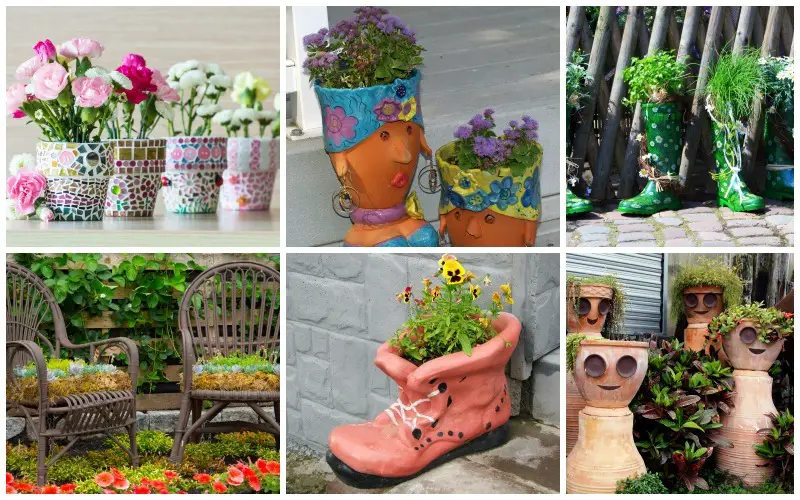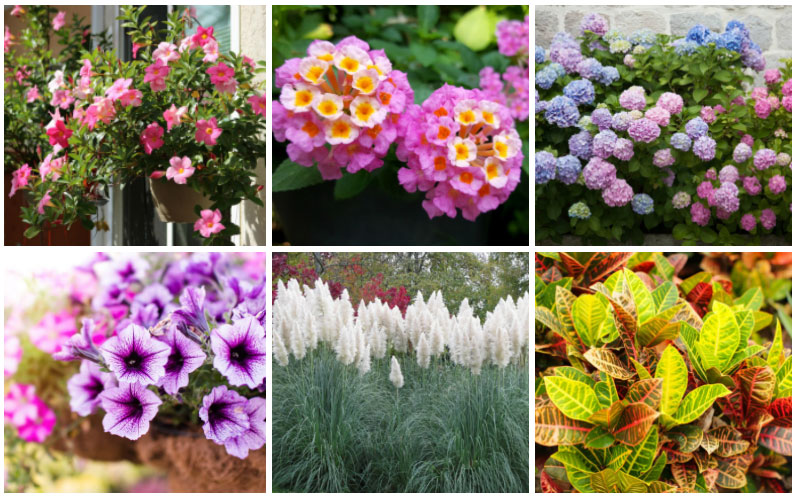
While it’s easy enough to start a container garden to fill awkward spaces and work around poor soil, not everyone knows how to design one that will be attractive and fruitful.
The tips below will inspire you to get out of your comfort zone and avoid the common mistakes made with container gardens.
Think Vertically
Elevate your container garden from drab to fab by using height. Juxtapose plants of varying sizes to create a more attractive garden or add a focal point.
Watch the video below for an easy but brilliant tip on how to place your plants when designing your container.
Taller plants like cordyline fruticosa may work best toward the back of your container garden, or you can plant them in the center and surround them with smaller plants.
Climbing plants can obtain height with a small trellis tucked into a pot. Add to the impression of height with hanging planters, stands beneath your containers, or containers that are taller stands.
Creeping jenny, Scaevola, or asarina that spill over the edge of tall pots can also be beautiful while making your garden seem taller.
Choose plants that require less light to place in the shaded areas, avoiding empty spots.

Plant Together
You can layer several types of flower bulbs within a large pot to create layers and to ensure the pot is never empty, no matter the time of year.
Plants that grow well together because of their similar requirements for water, nutrients, and sunlight are known as companion plants.
If they’re too different, your bulbs or plants may die.
Take special care with allelopathic plants, which make the soil toxic.
If you’re not sure where to start, most houseplants make good companion plants.
You can also group together multiple succulents, and succulents often do well with cacti, too.
Add your first layer of bulbs atop around four inches of soil. Place the bulbs where you want the plants to grow.
For example, planting taller plants toward the back of the pot allows them to remain visible without blocking the view of shorter plants. You have more wiggle room with tall ornamental grasses, such as lemongrass or ruby mountain grass, which you can intersperse with other plants without obscuring them.
Cover the bulbs completely with soil before adding a layer of bulbs of a different species. If your container is deep enough, you could have multiple layers and finish it off by transferring a few small plants from their nursery containers, so there’s something to look at while waiting for the bulbs.
Keep an eye on your companion plants and trim any that threaten to take over.
Complement Plants and Colors
The major draw of a container garden is placing plants in proximity that wouldn’t grow well together without containers. Variety is essential to a successful container garden.
Don’t make the mistake of doing too much of the same, whether it’s the type of plant or color. A common mistake people make is only choosing flowers for their container gardens.
Greens are considered filler plants, but they’re essential for adding texture and keeping containers full when flowers are out of bloom.
For this reason, some people consider them the bones of a container garden. Ensure your greens have leaves of different sizes and shapes to mix with flowering plants to achieve diversity.
The following make excellent filler plants.
- Ornamental cabbage or kale
- Silver ragwort (dusty miller)
- Basil
- Celosia (plume flower)
- Lemongrass
- Ferns
- Artemisia
Similarly, choose contrasting colors to make them pop. Placing purple next to yellow makes each appear more vibrant.
Coleus and pink caladium are great examples of bold leafy plants that are also quite colorful. Don’t forget about your containers, which don’t need to blend into the background.
If you’re working with a color theme, choose flowers of different hues and brightness to break up the monotony. Even greens of different shades can make a big difference to the presentation of your garden.
To make shopping easier, use two carts at the nursery. Use one when choosing plants that look good together. Then, when you’ve chosen, place the plants you intend to buy in the other.













